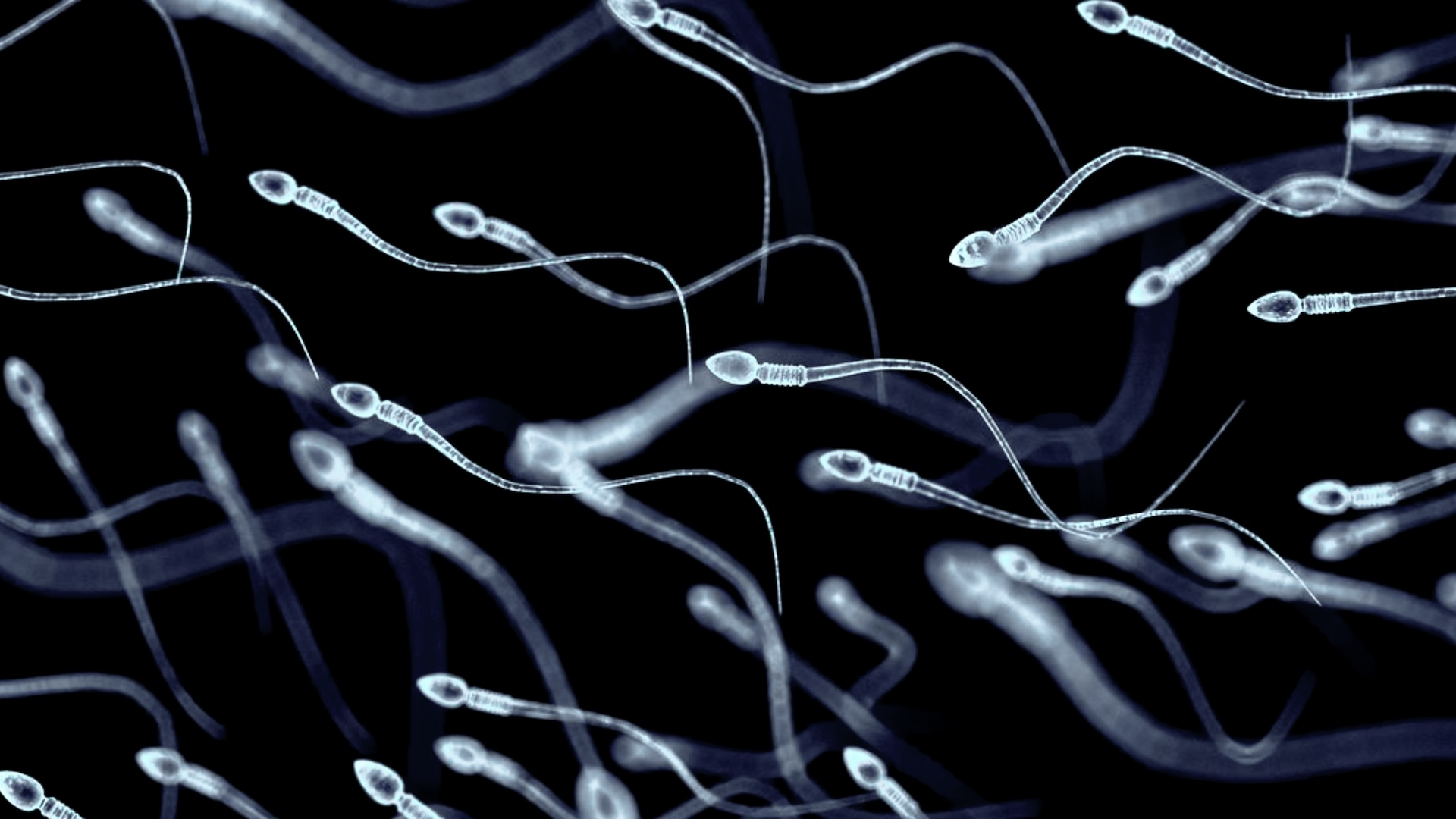How long can human sperm survive?
It's a myth that sperm die upon contact with oxygen. In fact, their resilience might surprise you.

Sperm cells have a monumental task, but their days are numbered. From the moment they're made in the testes to the time they may spend winding their way up the labyrinthine of the female reproductive tract, their internal clocks are ticking.
So exactly how long do human sperm survive, in order to complete this journey?
The answer depends on where the sperm is and conditions such as temperature, moisture and energy levels. For instance, from the testes, they migrate up a narrow, coiled channel called the epididymis for up to 10 days, until they reach a reservoir at the end, where they await ejaculation.
In this protected bubble, "The sperm can be stored there in a viable but functionally suppressed state for anywhere up to around two weeks," Brett Nixon, a researcher in the School of Environmental and Life Sciences at the University of Newcastle, Australia, told Live Science in an email.
Outside the cozy confines of the testes, sperm face a more unpredictable world. While it's often said that sperm die when they come into contact with oxygen, that's not true — but moisture levels are critical to their survival.
If left on a dry surface outside the body without a liquid medium to swim in, sperm will wither and die within a few minutes to an hour. In ideal laboratory conditions where sperm may be incubated in a controlled environment — for instance, during assisted reproduction processes like in vitro fertilization — these cells can survive for up to 72 hours. Their lifespan increases significantly with the help of other technological advances, however. "If frozen appropriately, sperm can survive for decades," Nixon said.
But sperm can live naturally inside the body, after they leave the testes, for an impressive amount of time.
Get the world’s most fascinating discoveries delivered straight to your inbox.
"There are one or two reports of sperm surviving in the female tract for the next menstrual cycle, so up to 28 days, but they're few and far between," Christopher Barratt, a professor of reproductive biology at the University of Dundee in the U.K., told Live Science. "So most people say [sperm survive] up to seven days. We know this because a person still has a roughly 5% chance of getting pregnant even if they have sex as long as seven days before ovulation, he explained. "So the presumption is that the sperm cells can survive for that period of time," Barratt said.
Related: Is the Y chromosome dying out?
How do sperm last this long? Their longevity comes down to several factors, many of which researchers are still trying to understand. The seminal plasma that carries sperm into the body could play a role. This fluid contains ingredients that support and nourish sperm, including protein molecules and nutrients like zinc. And although sperm cells burn a lot of energy, they can switch to a more efficient method of using and generating energy when supplies are low, which might help them survive longer, Barratt said.
The female reproductive tract also plays a critical role in sperm's survival by supplying them with energy in the form of glucose as they travel toward the egg, Barratt noted. "[Sperm] do have their own energy resources, but they won't last five days or seven days," Barratt said. "They do need to get it from the female tract."
What's more, the cells of the tract appear to provide crucial rest stops for sperm along the way — for example, in the lower fallopian tube, or oviduct. Rather than racing to the egg, there’s evidence that sperm slow down and dock at these reservoirs, Barratt said. Here, they attach to surface cells and seem to take refuge, until they wriggle free for a final dash to the egg.
In fact, when researchers investigated this phenomenon in pigs, they found that sperm cells bind to special sugars, called glycans, within oviduct cells and that the sperm that did so lived longer than those that did not. Research on other mammal species also shows that sperm that bind to oviduct cells move, fertilize and live longer than those that don't bind to these cells.
It's possible that the oviduct cells deliver ingredients and trigger cellular changes that help to maintain the sperm and increase their staying power in the reproductive tract. "There's a lot of data on different molecules that might pass between the sperm and oviduct, and in fact, that you have the sperm signaling to the oviduct, themselves," Barratt noted. However, studies on this process are difficult to do in humans, and are therefore limited. "I don't think the mechanism is yet clear," Barratt said.
What is clear is that longer-living sperm provide a reproductive advantage in humans. Sperm that linger for several days in the body have a greater chance of overlapping with ovulation, the brief window of time when an ovary releases an egg to be fertilized. The sperm's ability to wait it out in the oviductal reservoirs essentially ensures that hundreds of sperm are prepped and ready to go when an egg arrives.
"There's more chance of getting pregnant closer to ovulation, and the day of ovulation," Barratt said. "But if the sperm cells can be in there, in waiting, then that's an advantage. Surviving for a longer period of time gives that flexibility."
This benefit isn't exclusive to humans. In fact, sperm show remarkable survival skills in other species, where they can last many times longer than human sperm. "We know that the sperm of some species of bats are able to survive for up to six months in the female reproductive tract," Nixon said. "There are also some extraordinary examples of sperm survival of several years in the female reproductive tract of reptiles."
How those particular sperm clung onto life is another fascinating mystery to unpick. "Scientists have still yet to work out how this extended survival is accomplished," Nixon said.

Emma Bryce is a London-based freelance journalist who writes primarily about the environment, conservation and climate change. She has written for The Guardian, Wired Magazine, TED Ed, Anthropocene, China Dialogue, and Yale e360 among others, and has masters degree in science, health, and environmental reporting from New York University. Emma has been awarded reporting grants from the European Journalism Centre, and in 2016 received an International Reporting Project fellowship to attend the COP22 climate conference in Morocco.
You must confirm your public display name before commenting
Please logout and then login again, you will then be prompted to enter your display name.

